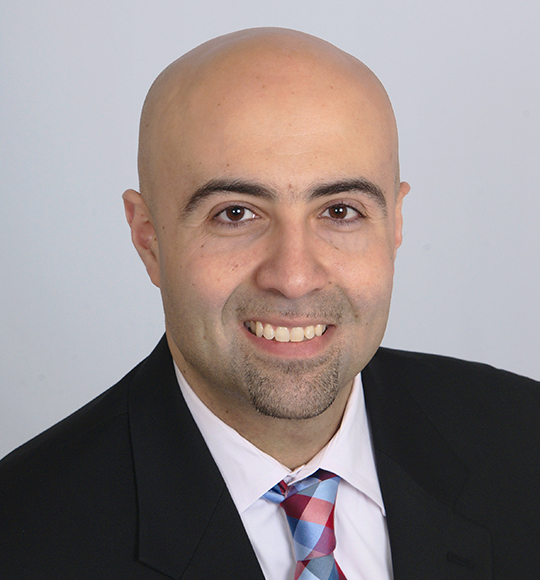Cataract
Cataract
What is a Cataract?
A cataract is a clouding of your natural lens inside the front portion of your eye. The lens sits just behind the colored part of the eye called the iris. The lens is made up of many proteins that change and lose transparency, and this is known as cataract formation. It can form for many reasons including age, medical conditions, steroid use, trauma, etc. Though cataracts are thought of as a condition for the older population many are surprised to learn that over 20% of those who have cataract surgery are under 65 years of age.
What is Cataract Surgery?
There are many types of cataracts but in general, surgery is performed with the same steps. The most common procedure used for removing cataracts is called phacoemulsification. A small incision is made in the side of the cornea (the front part of your eye). Incision size is approximately 2.4 millimeters which is shorter than your smallest fingernail. Then your surgeon inserts a tiny instrument that uses high-frequency ultrasound to break up the center of the cloudy lens and carefully suction it out the lens contents. Careful attention is made to keep the outer shell or capsule intact so the artificial lens can be placed. After the cloudy lens has been removed, the surgeon will replace it with an intraocular lens (IOL) implant made of plastic, silicone, or acrylic. This new, clear lens allows light to pass through and focus properly on the retina. The IOL becomes a permanent part of your eye. In most cases, the IOL is inserted behind the iris, the colored part of your eye, and is called a posterior chamber lens. Sometimes, the IOL must be placed in front of the iris. This is called an anterior chamber lens. When the IOL is in place, the surgeon closes the incision. Stitches are rarely used. After the surgery, your surgeon usually places a protective shield over your eye. Surgery typically is 8-12 minutes but the time in the operating room may be up to 45 minutes. You should expect to be at the surgery center for up to 2-3 hours.
Cataract Symptom Checker






Are You a Candidate for Cataract Surgery?
Take Our Self-Test and Find Out
Advanced Micro-Incisional LASER Cataract Surgery
We provide cutting edge LASER technology and intraocular lens options to fit all our patient’s visual desires. In laser assisted cataract surgery, an advanced femtosecond laser replaces or assists the use of a hand-held surgical tool for the following steps in cataract surgery:
- The corneal incisions: main incision and astigmatism relaxing incisions
- The anterior capsulotomy (the most complex portion)
- Cataract fragmentation
The use of a laser can improve the precision, accuracy, and reproducibility of each of these steps. Our surgeons will spend time with you to go over all the options related to your cataract surgery to ensure that your INDIVIDUAL VISUAL NEEDS are met. We take TIME and INTEREST in you as an individual to make sure that the options you select fit your lifestyle. It is not one size fits all. You only go through this once, you should be in the most caring and able hands you can be. If you have any questions, please call or email us today.
Different Types of Intraocular Lenses
Multifocal/Trifocal (PanOptix) Lens
The goal of this lens is to provide more independence from glasses by providing a range in focus from distance to near. These lenses use diffractive optics to allow for these ranges and are not accommodative lenses. They are not bifocal lenses. Similar to the lens of a very advanced camera, the optics of the lens allow for the extension of range. The optics allow a person to do near activities and distance activities without having to look in a certain direction as in a bifocal or in progressive glasses. Some noteworthy considerations:
Extended Vision IOL (Vivity IOL) (Distance-Midrange + Astigmatism)
Vivity IOL gives patients the option of range in vision without increasing risk of glare and haloes. Vivity uses wavefront technology to give a seamless range in vision as opposed to diffractive rings used in multifocal technology. The range of Vivity typically extends from distance to midrange and some near (i.e., large print). The near vision (i.e., small print) that Vivity gives may not be as much as what would be obtained with a trifocal lens. There are ways to utilize this technology to enhance more range in your vision and correct astigmatism. For a patient wanting premium cataract surgery with more than one focus, the option of Vivity vs. Trifocal is a discussion to be had with your surgeon to choose which option would be ideal in your case.
Accommodative Lens (AL):
Accommodation is the process at which the lens changes shape to focus eyes from distance to near and vice versa. Presbyopia is the process where accommodation is slowly lost, and a person requires the aid of reading glasses to see objects up close. These lenses (i.e., Crystalens) were designed to allow the lens to shift and give distance and up-close vision without using diffractive optics as in the multifocal lens technology. Typically, a person can expect similar distance vision as in the monofocal lenses and some intermediate near vision. Small print will likely still require the aid of magnifiers. There is an accommodative option with astigmatism correction as well named Trulign. There may be more variation in results with these lenses.
Lens That Can Correct Only One Focus: (Distance or near)
Toric Lens (Monofocal + Astigmatism)
The goal of this lens is to correct one focus usually distance and also correct astigmatism. Astigmatism is a distortion in vision that causes light or images to reach the back of the eye at two points, hence the distortion. If a person has astigmatism, these lenses provide the sharpest vision for desired focus without glasses. Optically they may even provide better astigmatism correction than glasses or contact lenses since the lens is placed at the focal point of the eye, the lens. In general, when using a toric lens we will correct for distance or near but these lenses do not provide multifocal or more than one focus vision.
Standard Monofocal Lens
The goal of this lens is to correct one focus usually distance but does not correct astigmatism. The quality of vision with the standard lens is the same as with other options but does not provide multifocal or more than one focus vision and does not correct astigmatism. If no optional lens choices are selected, we plan to place a standard monofocal lens during cataract surgery. This lens is included in the costs of traditional cataract surgery and is covered under most medical insurance plans.
Intraoperative Lens Calculator
Occasionally, it can be difficult to obtain precise preoperative measurements if patients have a history of refractive surgeries (LASIK, RK, AK etc…), mature cataracts or high eye prescriptions. In these cases, a technology called Intraoperative Lens Calculator (ORA) is available to measure the eye in the operating room and help determine the most accurate lens power. Moreover, this option can also be utilized if you have chosen to proceed with specialty lenses that provide range or correct astigmatism.
The Doctors at Eye Specialists & Surgeons of Northern Virginia have either authored or reviewed and approved this content.





